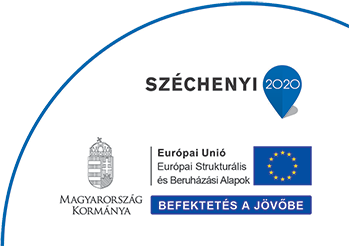
Tudományos Bizottság
Intézeti Kutatási Bizottság tagjai
Tudományos Igazgató
Fejlesztési Igazgató
Főigazgató-helyettes Főorvos
Klinikai Igazgató
Sebészeti Centrum Igazgató Főorvos
Gyógyszerterápiás Centrum Igazgató Főorvos
Diagnosztikai Igazgató Főorvos
Daganatpatológiai Központ Igazgató Főorvos
Nemzetközi Tudományos Bizottság tagjai
Prof. Peter Boyle, a Nemzetközi Prevenciós Kutató Intézet (iPRI) Igazgatója
Prof. Gunnar Saeter, az Oslo Egyetemi Kórház Kutatásvezető Igazgatója
Prof. Ulrik Ringborg, a Karolinska Institutet Egyetemi Kórház Onkológiai Centrum Igazgatója
Kutató Osztályok
Molekuláris Genetika
Molekuláris Immunológia és Toxikológia Osztály
Kísérletes Farmakológia Osztály
Biokémiai Osztály
Szelenofehérje Kutató Osztály
Nemzeti Tumorbiológiai Laboratórium
Széleskörű kutatási tevékenységek az egyes klinikai osztályokon.
Jelenleg futó kutatási programok
A magyar lakosság genetikai diverzitásának vizsgálata
Új „célpont” molekulák felfedezése új terápiás eljárások kifejlesztése érdekében
Kezeléssel szembeni rezisztenciáért felelős molekuláris útvonalak feltérképezése
Új molekuláris markerek azonosítása a diagnosztika és terápia elősegítésére
Molekuláris diagnosztikai részleg kialakítása a precíziós gyógyászat sikerességéért (molekuláris diagnosztika, képalkotó vizsgálatok, új genetika alapú diagnosztikai panelek, funkcionális proteomika, innovatív biomarkerek, keringő tumorsejtek és exoszómák vizsgálata, stb.)
Az örökletes daganatos megbetegedések (mellrák, vastagbél- és végbélrák) megelőzése és korai felismerése
Alapkutatás
Új alapkutatással foglalkozó munkacsoportok
Molekuláris Immunológia és Toxikológia Osztály
Kísérletes Farmakológiai Osztály
Az onkológiai alapkutatás új irányai
funkcionális proteomika
redox tumorbiológia
új terápiás kezelések kifejlesztése
a jelátviteli folyamatok szabályozásának mechanisztikus vizsgálata új szempontok alapján
gyógyszer-peptid konjugámutok
Transzlációs kutatás
Nemzeti Onkogenomikai Projekt
A projektben az Országos Onkológiai Intézet koordinátori szerepet tölt be
A kelet-európai régióban egyedülálló és élenjáró projekt keretében a konzorcium az alábbi célok megvalósítását tűzte ki:
A magyar betegek szolid tumor valamint a vérképző rendszer daganatos megbetegedéseinek genomikai vizsgálata.
Olyan onkogének azonosítása, amelyek a tumoros fenotípusok kialakulásáért és a kapcsolódó jelátviteli útvonalakban keletkező zavarért felelősek
A daganatos megbetegedések új molekuláris genetikai elváltozásainak csoportosítása Big Data típusú elemzés segítségével
Az egyes betegekre specifikus genetikai elváltozások kimutatása
Nemzeti Kiválóság Program
Innováció az emlőrák kezelésének területén
A projekt végső célja egy új precíziós gyógyászati modell kifejlesztése és bevezetése az emlőrák kezelésére a műtéti kezelés, a sugárterápia, a klinikai onkológia, a képalkotás, a molekuláris diagnosztika és az alapkutatás összehangolásával.
A klinikai és alapkutatási tevékenységek összehangolását szolgáló rendezvények szervezése
Szemináriumsorozatok
Konferenciák
Folyóirat klubok
Egyre több az együttműködésen alapuló projekt és az Intézet közreműködésével készült publikáció
Például: Új funkcionális proteomikai módszerek kifejlesztése a célzott terápiák elleni rezisztencia kialakulásának tanulmányozására
Epidemiológiai Kutatás
A dohányzó és alkoholt fogyasztó betegek kockázatfelmérése
Öröklődő rákhajlam kockázatának felmérése az emlő, a petefészek, a vastagbél és a végbél, valamint a prosztata daganatos megbetegedésében szenvedő betegek esetében
A gén polimorfizmusok azonosítása az emlő, a vastagbél és a végbél, a fej-nyaki terület valamint a prosztata daganatos megbetegedéseiben
Kutatási Infrastruktúra
Kutatási célra fenntartott épületek
Kulcsfontosságú felszerelés
új generációs szekvenálás: Roche FLX Genom Szekvenáló Rendszer, Illumina MiSeq Rendszer
Tömegspektrometria: Thermo Orbitrap Fusion és LTQ XL tömegspektrométerek
Konfokális mikroszkóp: NIKON Eclipse 80i C1 konfokális mikroszkóp
Flow citométer: Beckman Coulter Cell Lab Quanta SC.
DNS chip és nagy áteresztőképességű fehérje expressziós profil analizátor
Kutatást támogató szolgáltatás
Biobank (új központosított rendszer, amelynek fejlesztése az utolsó fázisban van)
Speciális, steril állatház:
3000 élőállat
5000 egyed évente
az állatok 1/3-a immunszupresszált
több mint 50 különböző tumorsejtvonal 6-8 eltérő beoltási helyen
Gépi és elektronikus felszereltség
Izotóp labor
Raktár a kutatási felszerelések tárolására
A Közgazdasági Osztályon külön kijelölt, a kutatással foglalkozó részleg
Kutatási eredmények
Az évente megjelenő, lektorált közlemények, könyvek és könyvfejezetek száma meghaladja a 125 darabot, amelyek éves kumulatív impakt faktora a 2017-es és a 2018-as években meghaladta a 600-at.





